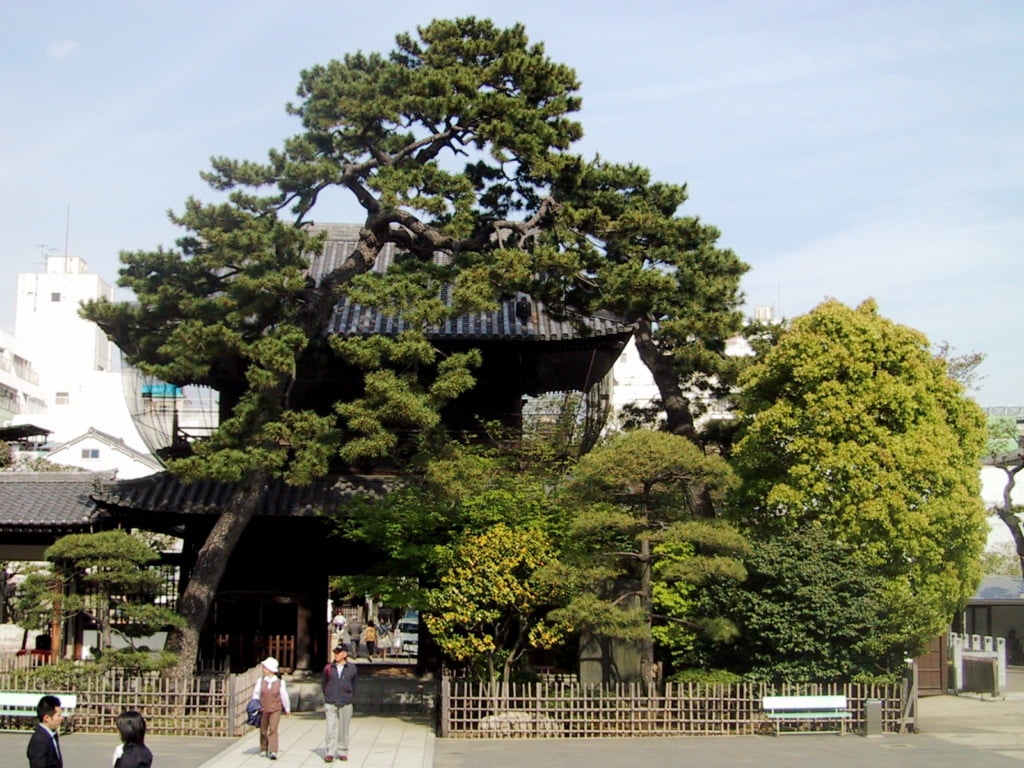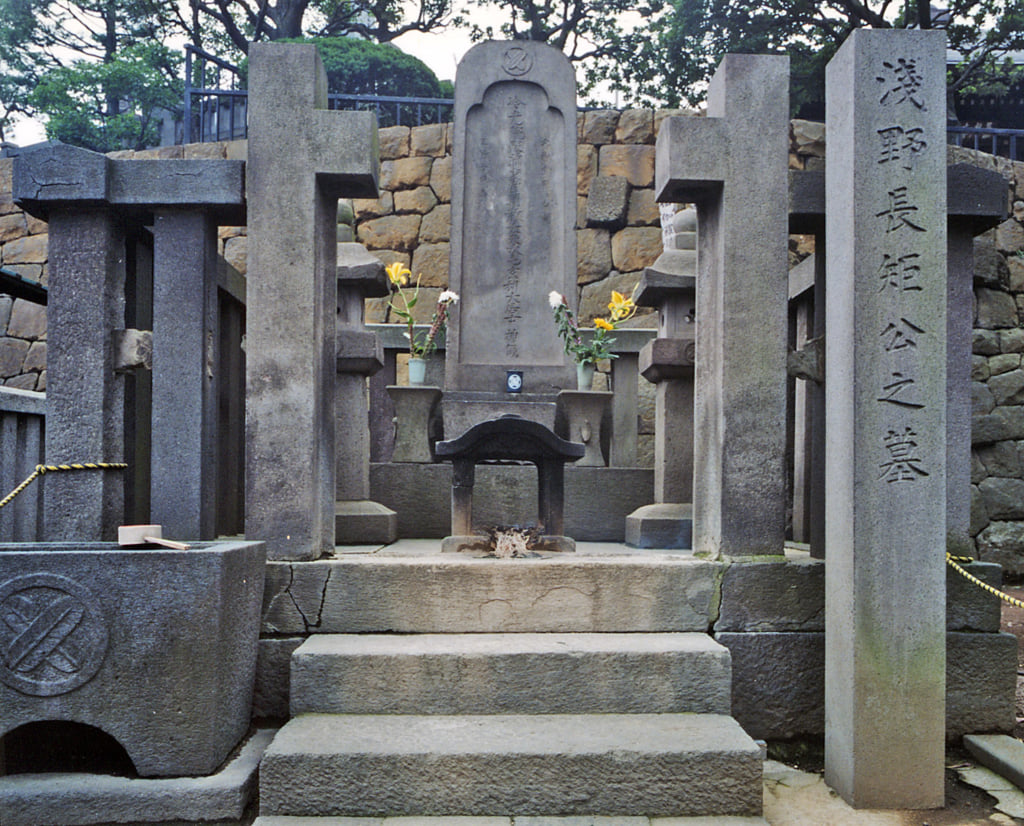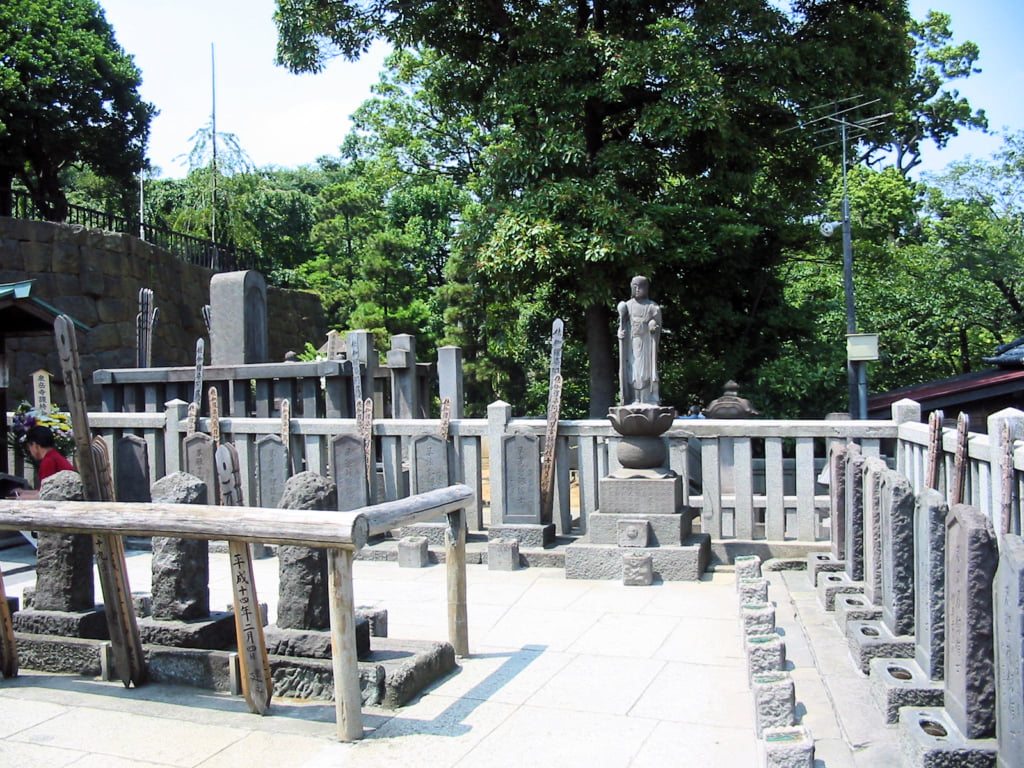Sengakuji, the Temple of Naganori Asano and the 47 ‘Ronin’
One of the most famous samurai stories came to an end in this Buddhist shrine which proudly maintains this past heritage.

© Oishi Kuranosuke
Constructed during the Edo period (1603-1868) in 1612 then rebuilt thirty years later following a fire, Sengakuji Temple is located close to Shinagawa station in Tokyo, in the Minato-ku district.
This religious site is the resting place for some of Japan’s best-known samurai: daimyo (governor) Naganori Asano from the Ako region (now Hyogo prefecture) and his 47 soldiers.
A sense of honour and loyalty
A tragic chain of events led to the death of these men-at-arms. In March 1701, Lord Kira Yoshinaka insulted Naganori Asano in the palace belonging to the shogun (great general). This was an affront for the governor of Ako, who drew his sabre and wounded his adversary. As the former was closer to the shogun, Naganori Asano was condemned to committing ritual suicide, seppuku (disembowelment).
Thus, the 47 samurai who had served the governor of Ako became ronin (without a master). Out of loyalty, they decided to avenge him and attack Kira Yoshinaka’s residence. The episode concluded with the enemy of the defunct daimyo being decapitated, before the ronin purified his head using water from a well, the kubiarai ido, and took it as an offering to Naganori Asano’s tomb at Sengakuji. Following this, on the general’s orders, the dissidents suffered the same fate, disembowelment. In spite of their act of rebellion, these men were also buried in the sacred temple alongside the master whose death they avenged.
Courage (yu), honour (meiyo), loyalty (chugi)… Through their collective act of vengeance, the 47 samurai of Naganori Asano respected the code of moral principles that soldiers in feudal Japan had to follow, the bushido (‘the way of the warrior’).
A place of remembrance
Nowadays, Sengakuji Temple is a place of preservation and commemoration. The Buddhist establishment houses a modest museum named Akogishi Kinenkan. Through numerous artefacts, the cultural site transmits the story of Naganori Asano and the 47 ronin. Visitors can also take a look at the legendary tombs and the purifying well.
Every year, the Ako Gishi Sai festival is held at the shrine to pay homage to the samurai for their act of loyalty. This celebration, where participants burn incense and enjoy culinary specialities, takes place on 14 December, the date when the samurai took their revenge.
As part of the Soto Zen school, the Sengakuji Temple has also always welcomed monks in their hundreds for training, so they can deepen their practice and studies. This tradition continues today and has been filmed by the Keio University Art Centre.
More information about the Sengakuji Temple can be found on its official website.

© 江戸村のとくぞう

Tomb for Naganori Asano © Fg2

Tombs of the 47 ‘Ronin’ © Stéfan Le Dû
TRENDING
-
The Tattoos that Marked the Criminals of the Edo Period
Traditional tattoos were strong signifiers; murderers had head tattoos, while theft might result in an arm tattoo.

-
'In the Realm of the Senses', the Story of a Dominant Woman
Nagisa Oshima made Sada Abe the heroine of his film, defying the codes of 'pinku eiga' that make men the focus of attention.

-
‘Girl in Kimono’ by Painter George Hendrik Breitner
After discovering Japanese engravings, the Dutch artist drew inspiration from them for a series of paintings marked by Japonisme.

-
Queen's First Steps in Japan, by Koh Hasebe
The photographer captured on camera moments during the renowned British group's first visit to Japan, back in 1975.

-
Taking Time to Watch the Forest Breathe With Takeshi Shikama
Combining history with a photographic technique, 'Silent Respiration of Forests' is a call to rethink our relationship with nature.





